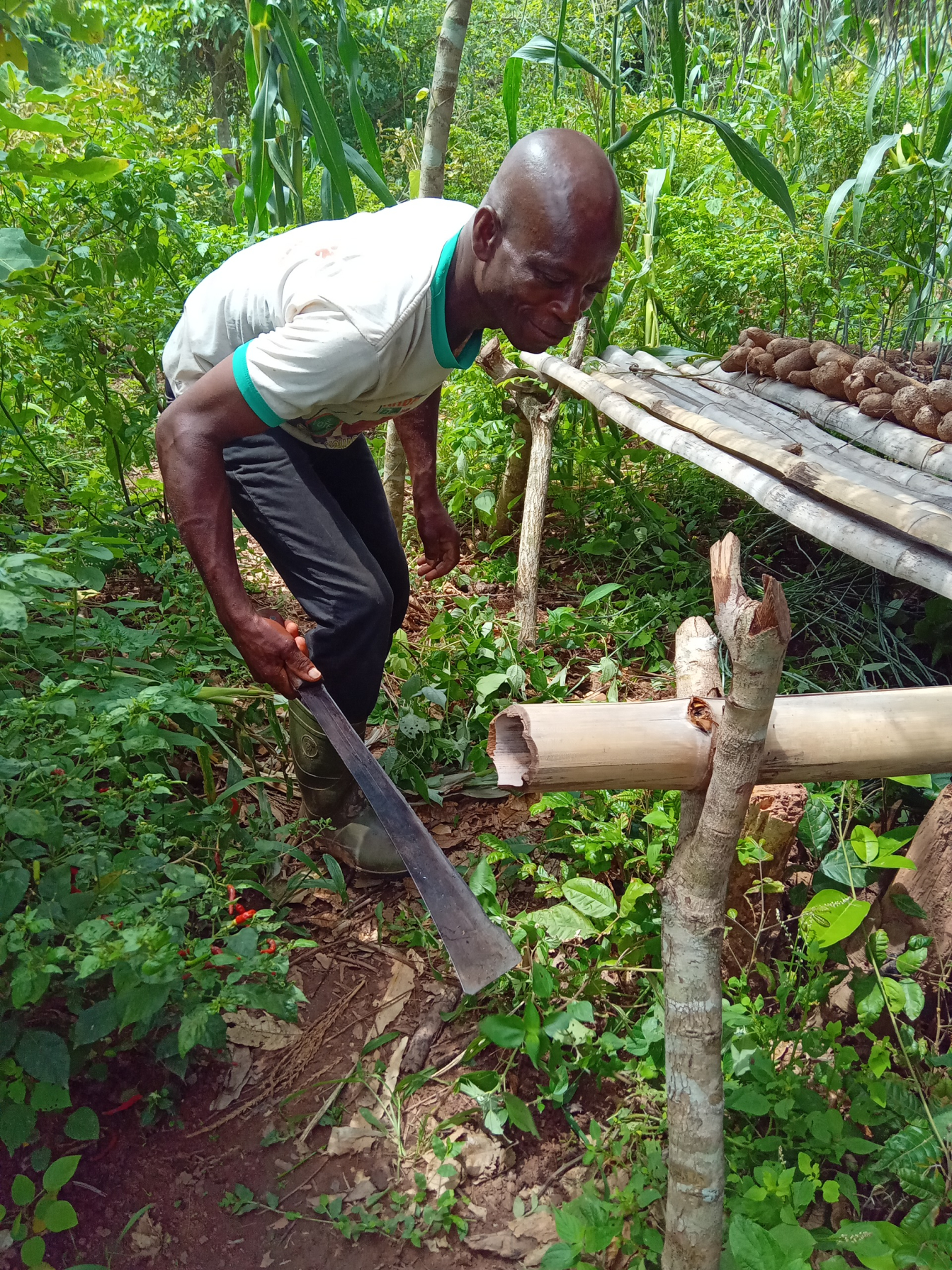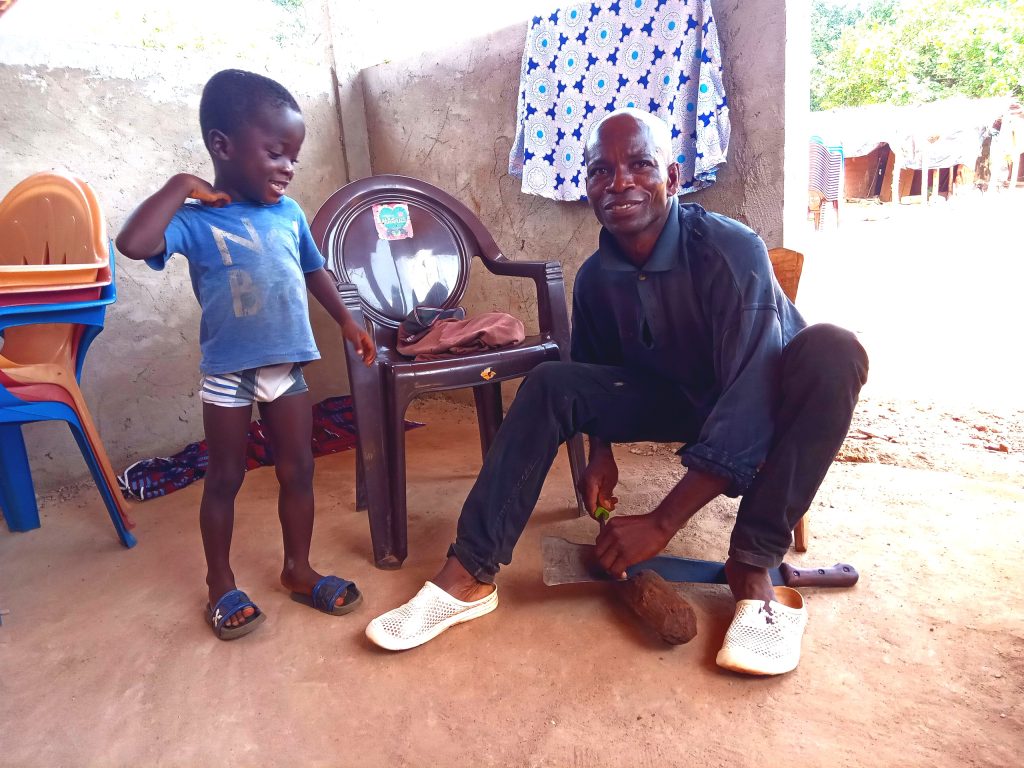Traditional farming passed down through generations rarely brought plentiful harvests. Families like that of 30-year-old Koffi Kouakou Charles (“KKC”), tending yam fields to feed his seven children, barely got by, their efforts limited by old methods and dwindling yields.
In Mékro, Sustainable Farming Is Sowing Hope and Transforming Lives

ABIDJAN, Ivory Coast – Daybreak in Mékro, a rural village in central Côte d’Ivoire, begins with the soft hum of daily life, women carrying water for beehives, children sweeping the family courtyards, animals emerging as the sun crests over the land.
Here, in the heart of the N’Zi region, famed for abundant yams, cassava, and rice, farming has always been the soul of survival.
Yet for years, that survival was a struggle. Traditional farming passed down through generations rarely brought plentiful harvests. Families like that of 30-year-old Koffi Kouakou Charles (“KKC”), tending yam fields to feed his seven children, barely got by, their efforts limited by old methods and dwindling yields.
The year 2024 brought fresh hardship when a deadly livestock epidemic, peste des petits ruminants (PPR), swept through Mékro and wiped out the chickens and goats of countless farmers, Koffi included. For Koffi, who already faced poor yam harvests, it felt like the last straw.
READ MORE: Africa in Motion: A Captivating Exploration of the Past, Present, and Future of Africa’s Regions
But with hardship came opportunity. Koffi discovered the Project to Improve the Livelihoods of Smallholders and Women (PREMOPEF). Financed by the Ivorian government, the Global Agriculture and Food Security Program, and the African Development Fund, PREMOPEF is on a mission: lift 60,000 of the region’s most vulnerable, half of them women, over a third young people, out of chronic poverty and food insecurity by teaching sustainable farming and investing in the core crops of yams, cassava, and vegetables, plus revitalized poultry production.
Training Fields, Transforming Techniques
At the “Farmer Training Field,” Koffi and dozens of other project participants learned agroecological approaches, ways ofgrowing food that care for both land and people. Instead of planting only the old “Kouba” yams, Koffi switched to new, climate-resilient varieties called “Anader” and “Cameroun.” He learned more efficient seeding, soil care, and conservation techniques, supported by project agronomists.
“Frankly, the work was exhausting… Despite our efforts, the harvests were poor. It was really hard,” Koffi recalls of his former routines.
Now, he beams: “Today, thanks to this project, I can think about my children’s future and even expand my farm.”

The changes were dramatic. From his first new-season harvest in December 2024, Koffi doubled his yam yield, up to four tonnes on the same land he once scraped by with two. He reserved most for his family and seeds for next season and soldthe rest for about $250, a major windfall in rural Mékro.
With support from PREMOPEF, Koffi is thinking bigger: investing in mechanical tools like ridge-making and seed-drilling machines, learning more about livestock best practices, and dreaming one day of building storage facilities to save more of each bumper crop from spoiling. After the PPR disaster, he’s determined to rebuild his poultry business, this time, with the support and training needed to avoid past mistakes.
READ MORE: How Burkina Faso’s Women Are Building a Cashew-Powered Future
“It’s also a chance for me to make up for the schooling I missed,” Koffi says, reflecting the project’s wider emphasis on equipping farmers with knowledge that lasts far beyond a single season.
Powering Rural Resilience
“The Project to Improve the Livelihoods of Smallholders and Women is a powerful tool for reducing household vulnerability and strengthening resilience to economic and environmental shocks,” says Ceserd Waba Akpaud, the project coordinator.
By the numbers, the project’s ambitions are bold:
| Impact Area | Target | Progress |
| People reached | 60,000 | Ongoing, ~35% youth/women |
| Key crops | Yams, cassava, vegetables | Multiple new climate-smart varieties deployed |
| Training | Agroecological, poultry | “Farmer Training Field” sessions in multiple villages |
| Economic uplift | Resilience, income, food security | Increased yields, market sales, new skills |
PREMOPEF’s focus on youth and women, in particular, has helped diversify income streams and empower those who traditionally faced the greatest barriers. The model is simple, but its ripple effects run deep, enhanced food security, greater resilience against climate volatility, and a template for broader, community-driven development.
With every new harvest, Mékro’s landscape is changing, not just fields greening and silos filling, but hope, dignity, and ambition taking root.
“By applying innovative approaches, we’re putting agriculture at the centre of inclusive development,” says Philip Boahen, GAFSP project coordinator at the African Development Bank.
Koffi is emblematic of a new generation: no longer farming because he must, but because he can build a future, one strengthened by science, spurred by opportunity, and shared with his neighbours. As more villagers join, Mékro is on track to become an example not just for Côte d’Ivoire, but for rural communities across Africa striving to turn hardship into hope, one season at a time.
Subscribe to Our Newsletter
Keep in touch with our news & offers
Thank you for subscribing to the newsletter.
Oops. Something went wrong. Please try again later.











